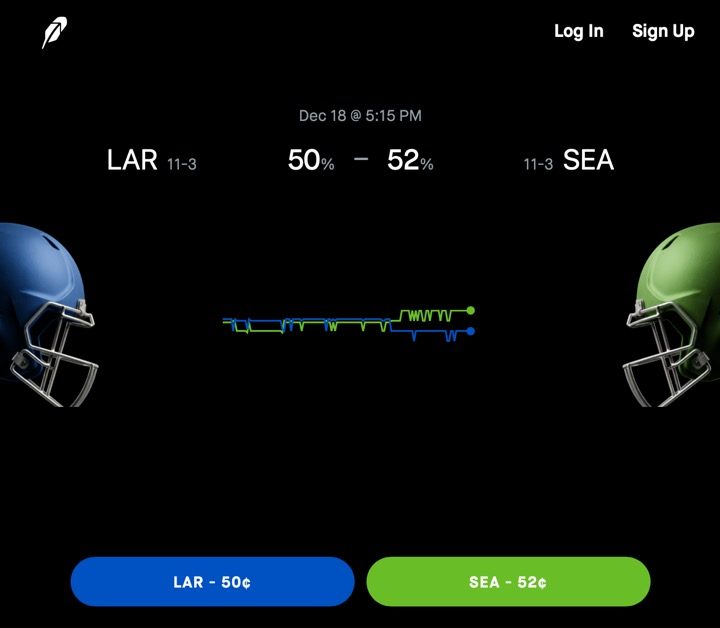Effective onboarding is essential for new hires, as it sets the tone for their entire employment experience. By sharing relevant information gradually, engaging them before their start date, and providing a thoughtful first-day experience, you can greatly improve their shift. Assigning a buddy for support and maintaining regular check-ins helps cultivate connections. Comprehending early signs of disengagement is key, but what else can you implement to guarantee long-term success in your onboarding process?
Key Takeaways
- Share company culture and benefits early to align new hires with organizational values and objectives.
- Ensure all necessary equipment and resources are prepared before the new hire’s first day to reduce stress.
- Assign a buddy to guide new hires and foster connections within the team from day one.
- Conduct regular check-ins to monitor progress and engagement, addressing any concerns promptly.
- Personalize welcome kits and celebrate milestones to enhance the onboarding experience and reinforce a sense of belonging.
Share Relevant Information Gradually
When you bring a new hire on board, sharing relevant information gradually is critical to help them acclimate without feeling overwhelmed.
Good onboarding practices involve introducing the company’s benefits, culture, and development opportunities during the recruitment process.
This approach builds excitement as it minimizes anxiety.
You should provide fundamental details, such as team introductions and first-day requirements, in a structured way to guarantee new hires feel prepared. Highlighting key expectations and objectives early on aligns new hires with the company’s goals and values.
Use welcome emails and preboarding kits to convey important logistical information, like parking details and start times, before their first day.
Reinforcing a sense of belonging by introducing team members is likewise imperative throughout the onboarding process.
Engage New Hires Before Their Start Date
Engaging new hires before their start date sets the stage for a smooth onboarding experience. Maintaining communication from offer acceptance to day one is essential; 65% of employers report that candidates no-show because of lack of engagement.
Sending a welcome kit with company swag, equipment, and FAQs helps new hires feel valued and prepared. Furthermore, providing a “what-to-expect” email detailing first-day meetings and tools can reduce anxiety about their shift.
Preboarding activities, like completing administrative tasks before their start date, streamline the onboarding process and prevent delays.
By engaging new hires early, you cultivate a sense of belonging and excitement about their new role, which lays the foundation for successful onboarding and retention.
Provide a Thoughtful First-Day Experience
A thoughtful first-day experience is crucial for new hires, as it sets the tone for their future at the organization. To create a smooth introduction, verify all necessary equipment and workspace are ready before their arrival. Provide a clear overview of the first few days, including a schedule of meetings and training sessions. Designate a point person to assist the new hire and facilitate a warm welcome.
Consider organizing an informal lunch or gathering to introduce them to their team members, nurturing connections.
Furthermore, offer campus maps and resources, like company swag, to help them feel comfortable.
Preparation Introduction Resources Ready workspace Team lunch Campus maps Scheduled meetings Point person assigned Company swag Overview of training Warm welcome Relevant resourcesAssign a Buddy
Assigning a buddy to new hires can greatly improve their onboarding experience by providing a friendly source of support and guidance.
This peer relationship allows new hires to ask questions openly and gain insights into the company culture, which can help them feel more integrated with the team.
Furthermore, having an experienced colleague as a buddy promotes social interaction, helping new hires build connections that contribute to their long-term engagement and satisfaction.
[embed]https://www.youtube.com/watch?v=TfOcbqjpRS8[/embed]
Peer Support Benefits
When new hires have a buddy assigned to them, their changeover into the company often becomes smoother and more manageable. This peer support provides vital benefits, making the onboarding experience more enjoyable and effective.
Here are some key advantages of the buddy system:
- Buddies serve as friendly points of contact for questions, easing anxiety.
- They introduce new hires to team members, nurturing a sense of belonging.
- Research shows that 56% of new hires find buddies important for success.
- The informal nature encourages open communication, making it easy to discuss challenges.
- Engaging a buddy from the same team creates a relaxed environment, boosting confidence.
Informal Guidance Role
One effective way to improve the onboarding experience for new hires is by implementing a buddy system. Assigning a buddy provides a friendly point of contact for questions and guidance, easing the new hire’s shift into the organization.
This system promotes a sense of belonging, as buddies can introduce new employees to colleagues and help them acclimate to the workplace culture. New hires often feel more comfortable approaching a buddy rather than a direct manager, which can improve their onboarding experience and reduce intimidation.
Buddies can likewise facilitate informal tours, sharing insights about the organization’s culture, and helping newcomers navigate their environment more effectively.
In the end, a buddy system can lead to improved retention rates, as supported new hires are likelier to stay long-term.
Maintain Connection Beyond the First Month
To maintain a strong connection with new hires beyond their first month, regular check-ins are crucial.
Schedule weekly one-on-one meetings initially, then shift to bi-weekly sessions to discuss their progress, goals, and any concerns they may have.
Incorporating various communication methods and involving them in team activities can encourage a sense of belonging and help identify any disengagement early on.
Continuous Check-Ins
Continuous check-ins with new hires are essential for maintaining a strong connection beyond the initial onboarding phase.
Regular check-ins during their first year greatly boost engagement and help address challenges they may face.
Here are some effective practices to implement:
[embed]https://www.youtube.com/watch?v=lYioOsb71rc[/embed]
- Schedule weekly one-on-one meetings in the first month for progress updates and feedback.
- Cultivate a supportive environment through continuous communication from managers.
- Utilize various communication methods, like in-person or virtual meetings, to guarantee connection.
- Track engagement levels to identify early signs of disengagement.
- Adjust onboarding processes based on new hires’ experiences and feedback.
Regular Communication Strategies
Regular communication strategies play a vital role in ensuring that new hires feel supported and connected to the organization long after the initial onboarding phase.
Conduct regular check-ins during the first year, starting with weekly one-on-one meetings for the first month. This helps align expectations and discuss progress.
[embed]https://www.youtube.com/watch?v=2y8SA6cLUys[/embed]
Utilize various communication methods, such as in-person meetings, virtual calls, or chat platforms, to maintain an open dialogue. Encourage new hires to share concerns and feedback during these sessions, cultivating a culture of open communication.
Schedule continuous check-ins beyond onboarding, as this ongoing support improves integration and satisfaction.
Monitor engagement levels through regular feedback sessions, adjusting practices as necessary to keep new hires motivated and connected in their roles.
Monitor and Address Early Signs of Disengagement
Monitoring and addressing early signs of disengagement is crucial for guaranteeing that new hires feel supported and integrated into their roles. Staying close to them during their initial weeks can help you gauge their engagement levels.
Here are some effective strategies to reflect on:
- Conduct daily check-ins to surface concerns and provide a platform for sharing feelings.
- Utilize onboarding checklists to track integration and guarantee initial goals are met.
- Encourage open communication about experiences to promote a supportive environment.
- Implement structured feedback mechanisms, like surveys, to identify disengagement trends.
- Analyze feedback regularly to adjust the onboarding process as needed.
Create a Positive First Impression
How can you guarantee that new hires feel welcomed from day one?
Start by implementing a well-structured onboarding program that shows your investment in them.
Prepare crucial resources, like equipment and workspace, ahead of time to assure a smooth experience. Personalize welcome kits with company swag and key information to reinforce a positive first impression and promote belonging.
Conduct a thoughtful orientation that includes team introductions and a clear overview of first-day activities, which helps build rapport and ease anxiety.
Celebrating small milestones during onboarding can improve morale and strengthen commitment to the organization.
Frequently Asked Questions
What Are the 5 C’s of Onboarding?
The 5 C’s of onboarding are Compliance, Clarification, Culture, Connection, and Check-back.
Compliance guarantees you complete necessary paperwork and understand policies.
Clarification involves clear communication of your job expectations and responsibilities.
Culture introduces you to the company’s values and norms, helping you align with its ethos.
Connection emphasizes building relationships with colleagues, as well as Check-back involves regular follow-ups to guarantee your integration is smooth and address any concerns you might have.
What Are the 5 Pillars of Onboarding?
The five pillars of onboarding are Preparation and Paperwork, Team Involvement and Cultural Integration, Enhancing the Onboarding Experience, Feedback and Continuous Improvement, and Measurement and Resources.
Preparation guarantees all necessary documentation and equipment are ready before the new hire’s first day.
Team involvement nurtures a sense of belonging.
Enhancing the experience personalizes interactions.
Feedback allows for process refinement, whereas measurement uses analytics to track satisfaction and improve future onboarding efforts.
What Are 4 C’s for Onboarding?
The 4 C’s of onboarding are Compliance, Clarification, Culture, and Connection.
Compliance guarantees you complete necessary paperwork and understand policies.
Clarification involves defining your roles and responsibilities clearly, helping you know what’s expected.
Culture introduces you to the organization’s values and mission, nurturing belonging.
Finally, Connection emphasizes building relationships within your team, often through buddy systems or social events, enhancing your engagement and retention in the organization.
What Are the Most Important Aspects of Onboarding for a New Hire?
The most important aspects of onboarding for a new hire include clear communication, support systems, and social integration.
From Day 1, you should receive information about company culture and role expectations. Having a designated buddy or mentor can guide you through informal questions.
Regular check-ins during your first month help assess your comfort level and engagement, whereas social activities, like team lunches, cultivate connections and guarantee you feel welcomed in the workplace.
Conclusion
Implementing these seven best practices for new hire onboarding not only improves the initial experience but additionally cultivates long-term employee engagement and retention. By gradually sharing information, providing support systems, and maintaining connections, organizations can create a welcoming environment that promotes integration.
A thoughtful first-day experience and personalized touches further contribute to a positive impression. Monitoring for disengagement early on guarantees that any issues are addressed swiftly, eventually benefiting both new hires and the organization as a whole.
Image Via Envato
Disclaimer: This story is auto-aggregated by a computer program and has not been created or edited by finopulse.
Publisher: Source link








